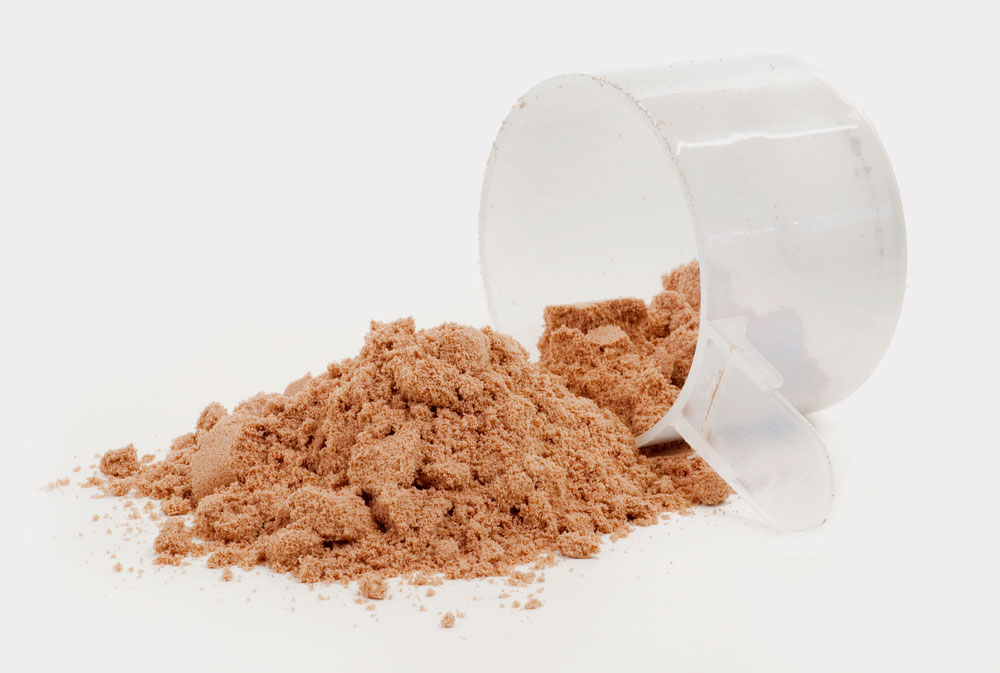Sunshine and Vitamin D Deficiency
Monday, 4 January 2010, 22:20 • 3760 เข้าชมแล้ว
Sunshine and Vitamin D Deficiency
For years the sun has been considered public enemy number one, causing skin damage, premature ageing, skin pigmentations and increasing our risk of skin cancer.
But before you head for the shade this summer, consider this: those nasty rays are needed in the production of vitamin D, and by blocking out the sun, you are risking a deficiency that could leave you open to all sorts of ailments.
An increasing number of scientific studies are now pointing to vitamin-D deficiency as a factor at play in a catalogue of illnesses including colds and flu, heart disease, strokes, diabetes, auto-immune disorders, depression, osteoporosis and numerous cancers. It has even been suggested as one possible cause of autism.
At the root of the rate of deficiency is the modern-day habit of shunning the sun, says the pro-vitamin D camp. Add to that lifestyle factors such as city-living which mean we live a much more indoor existence than our ancestors did, and you have a population that is simply not getting enough sunlight to produce the vitamin D their body needs.
Around 50 per cent of Americans are believed to have insufficient levels of vitamin D - and living in sunny climates doesn't necessary make you less prone to deficiencies. Studies in Australia highlighted have highlighted similar deficiencies, especially among the darker skinned and the elderly, while a recent study by the University of Hong Kong revealed more than 60 per cent of Hong Kong people were insufficient in vitamin D.
Professor Annie Kung Wai-chee, who led the study, said part of the problem was the common misconception that people living in sunny climates get all the sun and therefore the vitamin D they need without trying.
In addition, dark-skinned people are more at risk because the melanin that colours the skin works like a sun-block preventing the UVB rays being synthesized into vitamin D.
In a separate survey, Kung found 76 per cent of middle-aged and elderly women spent less than an hour in the sun within a one-week period and postulated that modern lifestyles, vanity and the fashion for pale skin are to blame.
'Asian women like to have fair skin and are more worried about the sun producing freckles and pigmentations, than skin cancer,' she said.
Hong Kong GP Dr Lauren Bramley claims around 70-80 per cent of her patients have a vitamin D level below the healthy benchmark of around 50ng/ml (nanogram of vitamin D per millilitre of blood).
The truth is vitamin D is not a vitamin but a type of hormone that plays an important role in the control of calcium. It has long been known to encourage healthy bones, reduce inflammation, and prevent the bone disease rickets in children and osteoporosis later in life.
However, some scientists claim the fact that vitamin D receptors have been found in the major organs, the brain and the reproductive system indicates it has a function to play throughout the body.
Since time began, human have gleaned most of their vitamin D from the sun. Just 15-20 minutes in bright sunshine produces 10,000 to 20,000 IU (international units) of vitamin D - some 50 times the amount you can get in many Vitamin D supplements.
Once formed under the skin, vitamin D passes to the liver and kidneys where it is activated. It then moves into the blood where it controls calcium levels and then into body tissue and into the cells.
It is there, says Dr John Cannell of the Vitamin D Council, a non-profit advocacy group based in the US, that it really goes to work, turning 'genes on and off at a dizzying rate, genes that are either making proteins that are essential to fighting cancer or genes that are making proteins that are promoting diseases like cancer.'
One solution to the deficiency problem is the vitamin D supplement - but how much can we safely take without overdosing and risking liver damage?
Professor Kung, like the US Food and Nutrition Board, recommends a daily dose 200 IU for children and adults rising to 400 IU for those aged over 50, and 600 for those aged over 70 for those at risk of a deficiency. The American Academy of Paediatricians advises 400 IU for children while the Canadian Cancer Society recommends 1,000 IU in winter or year-round for those at risk of cancer.
However, these amounts have been deemed too low by the Vitamin D Council which recommends levels of between 1,000 and 5,000 IU and even higher.
Dr Bramley shares the Vitamin D Council's belief in higher doses and claims she has seen remarkable results with adult patients on doses of 2,000 IUs a day.
'It's a hormone and so is very good for those with insulin resistance and I am also seeing less patients with coughs and colds.'
The same advice emerged from a review of 2,750 studies published in May by University of California professor Cedric Garland who said that increasing vitamin D intake to 2,000 IU a day could cut breast cancer rates by a quarter and bowel cancer by a third.
However, supplements are not yet readily available in many countries, including Hong Kong, which means most of us will have to rely on topping up our D-levels the way our ancestors did, with regular and careful exposure to sunlight.
'It's a really controversial topic as the advice as been so much the other way,' said Dr Bramley. 'But the recommendation is not to get loads of sun. Start off slowly at low intensity times. Learn to have brief exposure first and then apply the sunscreen. Even 15 minutes of direct exposure can yield great results.'
Read more: http://www.monstersandcritics.com/news/health/news/article_1484979.php#ixzz0KAG8WXPO&C
For years the sun has been considered public enemy number one, causing skin damage, premature ageing, skin pigmentations and increasing our risk of skin cancer.
But before you head for the shade this summer, consider this: those nasty rays are needed in the production of vitamin D, and by blocking out the sun, you are risking a deficiency that could leave you open to all sorts of ailments.
An increasing number of scientific studies are now pointing to vitamin-D deficiency as a factor at play in a catalogue of illnesses including colds and flu, heart disease, strokes, diabetes, auto-immune disorders, depression, osteoporosis and numerous cancers. It has even been suggested as one possible cause of autism.
At the root of the rate of deficiency is the modern-day habit of shunning the sun, says the pro-vitamin D camp. Add to that lifestyle factors such as city-living which mean we live a much more indoor existence than our ancestors did, and you have a population that is simply not getting enough sunlight to produce the vitamin D their body needs.
Around 50 per cent of Americans are believed to have insufficient levels of vitamin D - and living in sunny climates doesn't necessary make you less prone to deficiencies. Studies in Australia highlighted have highlighted similar deficiencies, especially among the darker skinned and the elderly, while a recent study by the University of Hong Kong revealed more than 60 per cent of Hong Kong people were insufficient in vitamin D.
Professor Annie Kung Wai-chee, who led the study, said part of the problem was the common misconception that people living in sunny climates get all the sun and therefore the vitamin D they need without trying.
In addition, dark-skinned people are more at risk because the melanin that colours the skin works like a sun-block preventing the UVB rays being synthesized into vitamin D.
In a separate survey, Kung found 76 per cent of middle-aged and elderly women spent less than an hour in the sun within a one-week period and postulated that modern lifestyles, vanity and the fashion for pale skin are to blame.
'Asian women like to have fair skin and are more worried about the sun producing freckles and pigmentations, than skin cancer,' she said.
Hong Kong GP Dr Lauren Bramley claims around 70-80 per cent of her patients have a vitamin D level below the healthy benchmark of around 50ng/ml (nanogram of vitamin D per millilitre of blood).
The truth is vitamin D is not a vitamin but a type of hormone that plays an important role in the control of calcium. It has long been known to encourage healthy bones, reduce inflammation, and prevent the bone disease rickets in children and osteoporosis later in life.
However, some scientists claim the fact that vitamin D receptors have been found in the major organs, the brain and the reproductive system indicates it has a function to play throughout the body.
Since time began, human have gleaned most of their vitamin D from the sun. Just 15-20 minutes in bright sunshine produces 10,000 to 20,000 IU (international units) of vitamin D - some 50 times the amount you can get in many Vitamin D supplements.
Once formed under the skin, vitamin D passes to the liver and kidneys where it is activated. It then moves into the blood where it controls calcium levels and then into body tissue and into the cells.
It is there, says Dr John Cannell of the Vitamin D Council, a non-profit advocacy group based in the US, that it really goes to work, turning 'genes on and off at a dizzying rate, genes that are either making proteins that are essential to fighting cancer or genes that are making proteins that are promoting diseases like cancer.'
One solution to the deficiency problem is the vitamin D supplement - but how much can we safely take without overdosing and risking liver damage?
Professor Kung, like the US Food and Nutrition Board, recommends a daily dose 200 IU for children and adults rising to 400 IU for those aged over 50, and 600 for those aged over 70 for those at risk of a deficiency. The American Academy of Paediatricians advises 400 IU for children while the Canadian Cancer Society recommends 1,000 IU in winter or year-round for those at risk of cancer.
However, these amounts have been deemed too low by the Vitamin D Council which recommends levels of between 1,000 and 5,000 IU and even higher.
Dr Bramley shares the Vitamin D Council's belief in higher doses and claims she has seen remarkable results with adult patients on doses of 2,000 IUs a day.
'It's a hormone and so is very good for those with insulin resistance and I am also seeing less patients with coughs and colds.'
The same advice emerged from a review of 2,750 studies published in May by University of California professor Cedric Garland who said that increasing vitamin D intake to 2,000 IU a day could cut breast cancer rates by a quarter and bowel cancer by a third.
However, supplements are not yet readily available in many countries, including Hong Kong, which means most of us will have to rely on topping up our D-levels the way our ancestors did, with regular and careful exposure to sunlight.
'It's a really controversial topic as the advice as been so much the other way,' said Dr Bramley. 'But the recommendation is not to get loads of sun. Start off slowly at low intensity times. Learn to have brief exposure first and then apply the sunscreen. Even 15 minutes of direct exposure can yield great results.'
Read more: http://www.monstersandcritics.com/news/health/news/article_1484979.php#ixzz0KAG8WXPO&C





